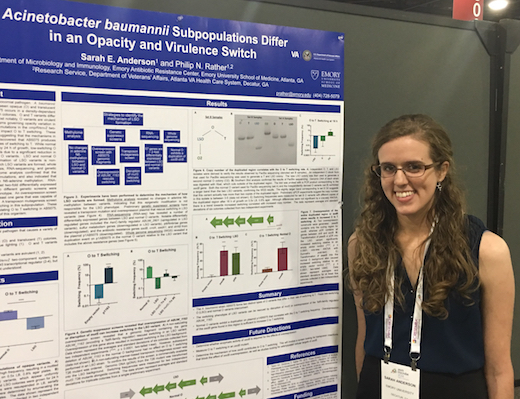
Emory BCDB graduate student Emma D’Agostino
We are highlighting Emory BCDB graduate student Emma D’Agostino, who is a rare triple play in the realm of science communication.
Emma has her own blog, where she talks about what it’s like to have cystic fibrosis. Recent posts have discussed the science of the disease and how she makes complicated treatment decisions together with her doctors. She’s an advisor to the Cystic Fibrosis Foundation on patient safety, communicating research and including the CF community in the research process. She’s also working in biochemist Eric Ortlund’s lab on nuclear receptors in the liver:drug targets for the treatment of diabetes and intestinal diseases.
The triple play is this — on her blog, Emma has discussed how she has to deal with antibiotic resistance. Emory Antibiotic Resistance Center director David Weiss’ lab has published a lot on colistin: how it’s a last-resort drug because of side effects, and how difficult-to-detect resistance to it is spreading. Emma has some personal experience with colistin that for me, brought the issue closer. Read more





